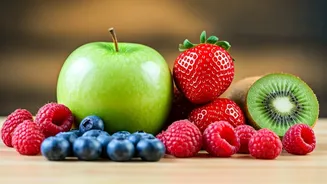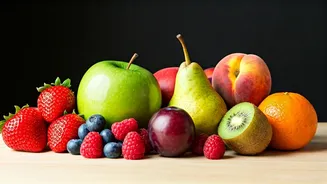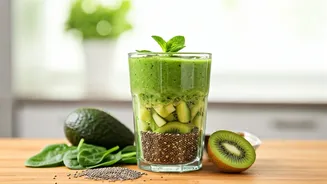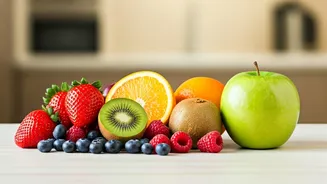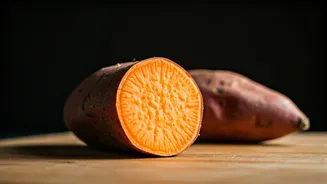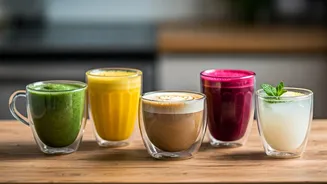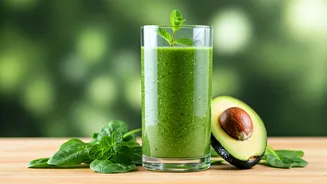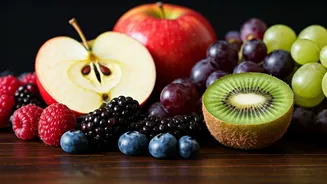Introduction: Fruits & Diabetes
Many people with diabetes often believe they must completely avoid fruits because of their natural sugar content. However, not all sugars are created equal.
Fruits contain fiber, vitamins, and minerals alongside their sugars, leading to a slower and more controlled release of glucose into the bloodstream. This makes certain fruits a healthy addition to a diabetic diet, provided they're consumed in moderation and as part of a balanced meal plan. The glycemic index (GI) and glycemic load (GL) are crucial factors to consider. Fruits with a low GI and GL cause a less significant spike in blood sugar levels, making them preferable choices. Portion control is also key; even low-GI fruits can affect blood sugar if eaten in excessive amounts. Consulting with a healthcare professional or a registered dietitian is always recommended to tailor a diet plan that suits individual needs and health conditions. This allows for personalized recommendations, ensuring the diet supports overall health and effective diabetes management.
Berries: Powerhouses of Health
Berries, including blueberries, strawberries, raspberries, and blackberries, are fantastic choices for individuals with diabetes. Their vibrant colors often indicate a high concentration of antioxidants, beneficial for reducing inflammation and protecting against cellular damage. Berries are also packed with fiber, which helps slow the absorption of sugar and prevents blood sugar spikes. A cup of berries generally provides a good amount of fiber while keeping the carbohydrate count relatively low. They are relatively low on the glycemic index, so they contribute minimally to blood sugar fluctuations. Berries can be incorporated into breakfast, added to salads, or enjoyed as a satisfying snack. Regular consumption of berries has been linked to improved insulin sensitivity and a reduced risk of heart disease, a common concern for people with diabetes. They provide essential vitamins and minerals, supporting overall well-being. Opting for fresh or frozen berries is preferable to canned versions, which may contain added sugars that can counteract the health benefits.
Apples: A Daily Delight
Apples are another excellent fruit option due to their high fiber content, particularly pectin, a type of soluble fiber. Pectin helps regulate blood sugar by slowing down the rate at which sugar is absorbed from the digestive tract. Apples have a moderate GI, but their high fiber content helps manage this effect. Choosing whole apples over apple juice is crucial, as the fiber is primarily found in the fruit’s skin and flesh. A medium-sized apple can be a filling and nutritious snack, providing a good source of vitamins, such as vitamin C, and various antioxidants. They are also portable and convenient, making them a great choice for people on the go. While apples offer many health benefits, portion control remains important. One apple per serving is a sensible portion to maintain stable blood sugar levels. Pairing apples with a protein source, like a handful of nuts, can further help regulate blood sugar.
Pears: Sweet and Safe
Pears, similar to apples, are rich in fiber and provide a moderate glycemic load, making them a suitable fruit choice for those with diabetes. The fiber in pears assists in slowing down the absorption of sugars, preventing sharp blood sugar spikes. Pears also offer essential vitamins and minerals and provide antioxidants. Selecting whole pears over canned pears or pear juice is recommended to maximize fiber intake and minimize added sugars. Pears can be enjoyed raw as a snack, added to salads, or incorporated into cooked dishes. They offer a natural sweetness and can help satisfy cravings for dessert without causing significant blood sugar fluctuations. The skin of the pear contains the majority of the fiber, so eating the whole fruit is beneficial. Like apples, portion control is key. A medium-sized pear is typically a safe serving, aligning with a balanced diabetic diet.
Citrus Fruits: Vitamin Boost
Citrus fruits, such as oranges, grapefruits, and lemons, are rich in vitamin C and fiber, making them excellent choices for individuals with diabetes. They have a lower GI compared to many other fruits. The fiber in citrus fruits helps regulate blood sugar levels, and vitamin C supports overall health and immunity. Oranges and grapefruits contain soluble fiber, aiding in slower sugar absorption. While lemons are tart, they can be added to water or used in recipes without causing a significant impact on blood sugar. When consuming citrus fruits, focus on whole fruits instead of juices, as juices lack the fiber found in the whole fruit. The natural sugars in citrus fruits are less likely to cause a dramatic spike in blood sugar when consumed in moderation. The high water content in citrus fruits also helps with hydration, an important aspect of managing diabetes. Grapefruit can interact with certain medications, so it is crucial to consult with a healthcare provider before incorporating it into your diet if you take any medications.
Cherries: A Sweet Treat
Cherries, particularly tart cherries, are another option, though moderation is essential. They offer antioxidants and have a lower GI than many other fruits. The fiber content in cherries can assist in regulating blood sugar. While their natural sweetness makes them a delightful treat, portion control is crucial. Consuming them in excess may still raise blood sugar levels. Fresh or frozen cherries are the best options, avoiding canned cherries with added sugars. Cherries can contribute to a balanced diabetic diet when consumed as part of a meal or snack. They can also provide a decent source of several vitamins and minerals, contributing to overall health. Due to the variability in their sugar content, it's wise to monitor blood sugar levels after eating cherries to determine individual tolerance. This proactive approach helps in managing blood glucose effectively.
Peaches: Summer Delight
Peaches, especially fresh ones, can be part of a diabetes-friendly diet when enjoyed in moderation. They contain fiber and have a moderate GI. The fiber content helps slow down the absorption of sugar. Peaches also provide vitamins and antioxidants. A medium-sized peach can be a refreshing and nutritious snack. They offer a natural sweetness that can satisfy cravings for desserts without spiking blood sugar significantly if eaten in proper portions. Pairing peaches with a protein source, such as a small handful of almonds, can also contribute to balanced blood sugar levels. Canned peaches in syrup should be avoided due to added sugars, opting instead for fresh or unsweetened versions. Eating peaches as part of a meal can help regulate the impact on blood sugar, supporting a well-rounded diet.
Kiwi: Tropical Treat
Kiwi fruits are surprisingly beneficial for people with diabetes. They have a low GI and are loaded with fiber and essential vitamins. The high fiber content aids in regulating blood sugar levels by slowing down glucose absorption. Kiwis are also a good source of vitamin C, vitamin K, and potassium, providing several health benefits. Their unique flavor and texture make them an exciting addition to a diabetic diet. Kiwis can be eaten fresh as a snack, added to salads, or incorporated into smoothies. Their nutritional profile supports healthy blood sugar management. When incorporating kiwis into your diet, monitor blood sugar levels to see how your body reacts and determine the appropriate portion size. Kiwis can be an enjoyable and healthy component of a well-balanced diet plan.
Plums: Naturally Sweet
Plums, another delightful fruit, can be suitable for people managing diabetes when eaten in moderation. They contain fiber and have a moderate GI. The fiber in plums helps manage blood sugar levels. Plums also contain various vitamins and antioxidants, offering health benefits beyond their taste. Fresh plums make a simple, healthy snack. They can be enjoyed on their own or added to salads. The natural sugars in plums are less likely to cause a rapid increase in blood sugar when consumed in sensible quantities. Portion control is essential. Eating plums as part of a balanced meal helps minimize the impact on blood sugar, ensuring they fit safely into a diabetes-friendly diet. Consider incorporating them occasionally to diversify your fruit intake.
Avocado: The Exception
Avocados, while technically a fruit, stand out due to their low sugar content and high healthy fat content. They are an exceptional choice for people with diabetes. Avocados have a negligible impact on blood sugar levels and can assist in regulating them because of their composition. The healthy fats in avocados promote satiety and contribute to improved insulin sensitivity. Avocados are rich in fiber, further supporting blood sugar management. They also provide essential vitamins and minerals. Adding avocados to meals or snacks can help balance blood sugar and improve the overall nutritional profile of a diet for those with diabetes. They can be included in salads, smoothies, or used as a spread, providing a versatile and healthy option. The combination of healthy fats and fiber makes avocados an excellent addition to a diabetes-friendly eating plan.
